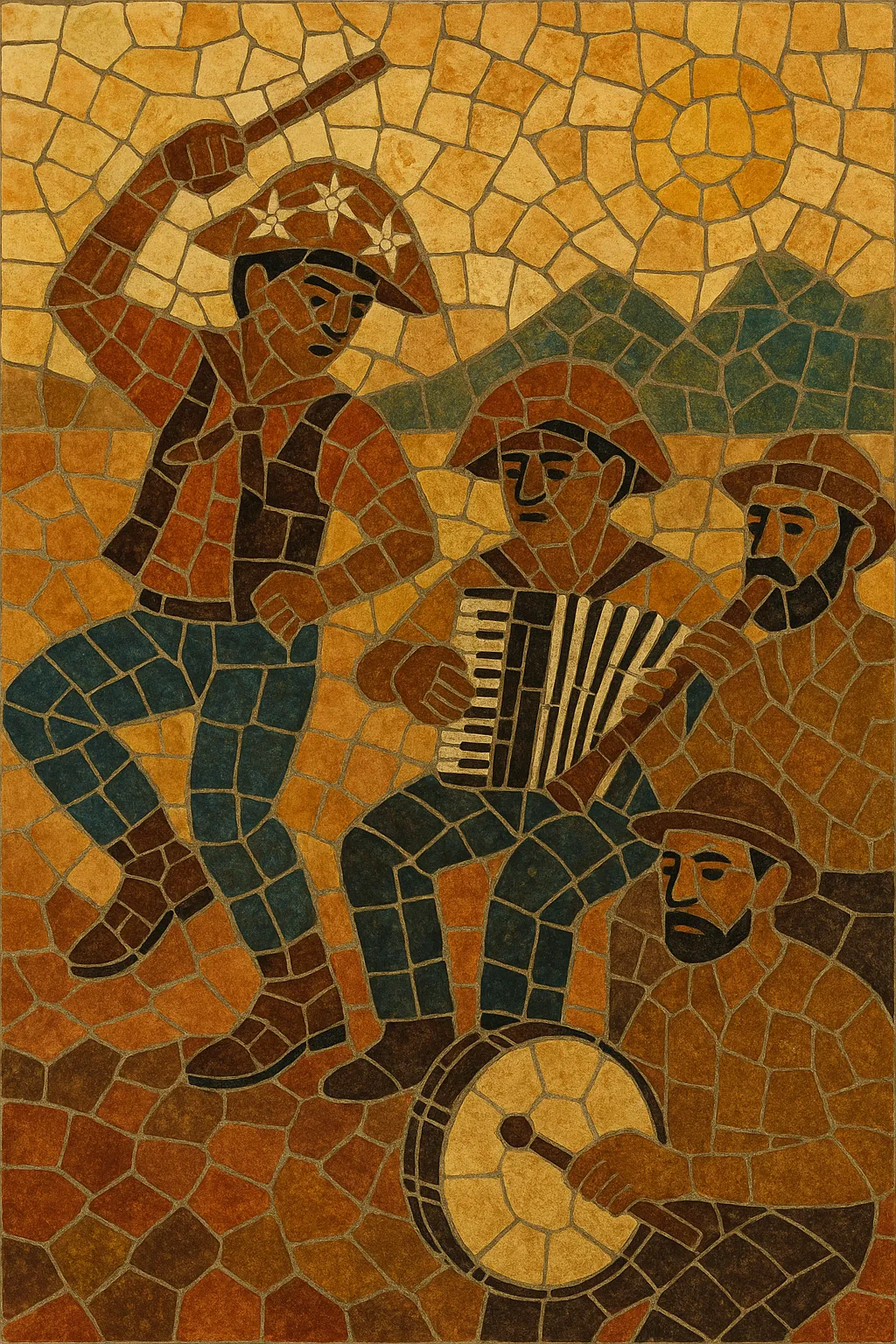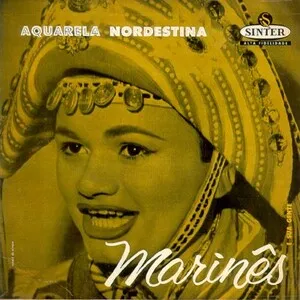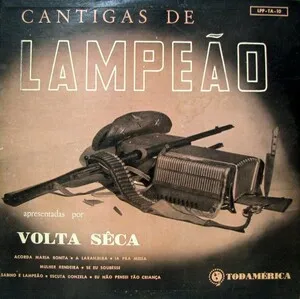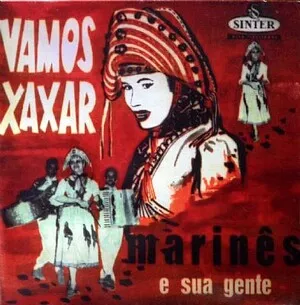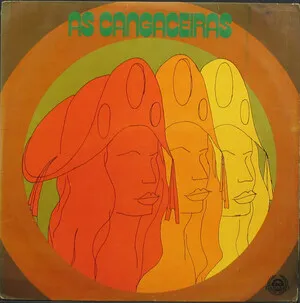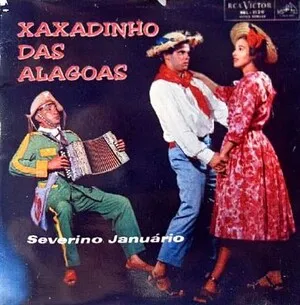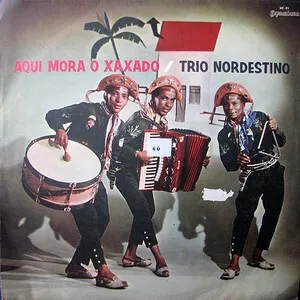Xaxado is a traditional music-and-dance style from Brazil’s semi‑arid Northeast (Sertão), closely associated with the cangaceiros, the nomadic bandit groups that roamed the backlands in the early 20th century. Its name is commonly linked to the scraping sound made by leather sandals dragging across sandy ground, which becomes part of the groove.
Musically, xaxado is typically in a quick duple meter (2/4), driven by a propulsive, marching feel and a steady, danceable pulse. In modern ensembles, accordion (sanfona), zabumba (bass drum), triangle, and sometimes pífano (fife), acoustic guitar, and rabeca provide the characteristic Northeastern timbres. Songs often feature simple, catchy melodies, strophic forms, and lyrics celebrating the Sertão, heroism, and everyday life, reflecting the music’s origins in the cangaço milieu.
Over time, xaxado moved from a men’s victory dance among cangaceiros into the broader forró repertory, thanks in large part to mid‑century popularizers who adapted its rhythms and aesthetics for stage, radio, and recording.
Xaxado emerged in the 1920s in the Sertão of Pernambuco and neighboring Northeastern states, where cangaceiros—most famously Lampião and his group—performed it as a celebratory, victory dance. The choreography emphasized a forward‑driving shuffle that scraped the sand, while improvised percussion and available folk instruments (notably pífanos/fifes and hand drums) reinforced a martial, processional pulse.
As radio, records, and urban stages embraced Northeastern culture, artists such as Luiz Gonzaga absorbed xaxado’s rhythm and imagery, presenting it alongside related forms like baião and xote. Arrangements standardized around sanfona (accordion), zabumba, and triangle, sometimes with pífano, giving xaxado a recognizable sound within the growing forró circuit. Lyrics began to memorialize the cangaço while broadening to themes of Sertão life, migration, and resilience.
Regional groups and virtuoso performers (e.g., Jackson do Pandeiro, Marinês, Trio Nordestino, Dominguinhos) kept xaxado in rotation, codifying dance steps for stage troupes and folk festivals. The rhythm’s straightforward, driving feel made it a staple selection within forró shows, often alternating with baiões, xotes, and arrasta‑pés.
Folkloric ensembles and forró bands continue to perform xaxado, while cultural projects in Pernambuco teach its history, steps, and music. Modern productions may blend traditional instrumentation with bass, guitar, or keyboards, but the defining quick‑duple pulse, sandy shuffle step, and Sertão themes remain intact.
Use a classic Northeastern setup: sanfona (accordion) for melody and harmony, zabumba for the bass drum pulse, and triangle for bright subdivision and off‑beat emphasis. Add pífano (fife), rabeca, pandeiro, acoustic guitar, or bass for color. Handclaps or the dance’s foot‑scrape can act as additional percussive texture.
Write in a brisk 2/4 at around 110–140 BPM. The zabumba typically marks the downbeat with a low thump and adds a higher slap or rim on the second beat, creating a compact, marching feel. The triangle sustains steady subdivisions, accenting off‑beats to make the groove feel propulsive and danceable. Emulate the characteristic sandal scrape by integrating short, percussive upbeats.
Keep harmony simple—often I–IV–V progressions in major, with dominant‑seventh colors. Mixolydian touches (flat seventh) suit the idiom and the accordion’s voicings. Melodies should be catchy and syllabic, staying within a comfortable range to support group singing and dance.
Favor strophic forms with a recurring refrain for audience participation. Lyrics draw on Sertão imagery: backlands landscapes, drought and resilience, cangaço lore, and everyday work and celebration. Call‑and‑response between lead and chorus works well, and short narrative verses punctuated by dance breaks reinforce the style.
Alternate instrumental choruses (accordion or pífano lead) with sung verses to keep energy high. Use brief percussion breaks to spotlight the dance step. Maintain clarity in the low‑mid range so the zabumba and accordion bass do not mask the triangle’s sparkle and the vocal lines.

